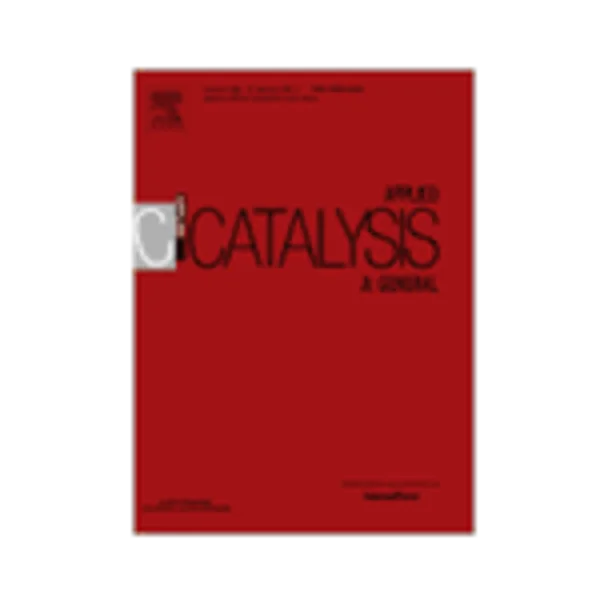-
crucial factors for catalyst aggregation and deactivation on co/al2o3 in a slurry-phase fischer–tropsch synthesis
جزئیات بیشتر مقاله- تاریخ ارائه: 1392/07/24
- تاریخ انتشار در تی پی بین: 1392/07/24
- تعداد بازدید: 980
- تعداد پرسش و پاسخ ها: 0
- شماره تماس دبیرخانه رویداد: -
the different behaviors for catalyst deactivation by forming aggregated catalyst lumps were investigated on the phosphorous-modified co/p–al2o3 and the unmodified co/al2o3 fischer–tropsch synthesis (fts) catalysts in a slurry-phase continuous stirred tank reactor. the lower catalytic activity at steady-state with a fast deactivation rate was observed on the phosphorous-unmodified co/al2o3 catalyst due to the facile formation of aggregated catalyst lump with a high hydrophilic property of support and a significant hydrocarbon deposition on catalyst surface. the amount of adsorbed water and the deposited hydrocarbons are strongly related with aggregated catalyst lump formation. the adsorbed water could possibly transform the local γ-al2o3 surface to pseudo-boehmite (bronsted acidic al2oh sites) material which is characterized as a low attrition resistance and accelerates the formation of fine powders during fts reaction. the formed fine powder during fts reaction could be easily aggregated and it is resulted in catalyst deactivation due to the difficult intraparticular diffusion of reactants. the possible mechanisms of phase transformation of γ-al2o3 to pseudo-boehmite and formation of aggregated catalyst lump were suggested by measuring the deposited hydrocarbons and the concentration of adsorbed water on catalyst surface with the help of the characterizations such as x-ray photoelectron spectroscopy, temperature-programmed surface reaction, diffuse reflectance infrared fourier transform and water-sorption method.
مقالات جدیدترین رویدادها
-
استفاده از تحلیل اهمیت-عملکرد در ارائه الگوی مدیریت خلاقیت سازمانی و ارائه راهکار جهت بهبود
-
بررسی تاثیر ارزش وجوه نقد مازاد بر ساختار سرمایه شرکت های پذیرفته شده در بورس اوراق بهادار تهران
-
بررسی تأثیر سطح افشای ریسک بر قرارداد بدهی شرکت های پذیرفته شده در بورس اوراق بهادار تهران
-
بررسی تأثیر رتبه بندی اعتباری مبتنی بر مدل امتیاز بازار نوظهور بر نقد شوندگی سهام با تأکید بر خصوصی سازی شرکت ها
-
تأثیر آمیخته بازاریابی پوشاک ایرانی بر تصویر ذهنی مشتری پوشاک ایرانی (هاکوپیان)
-
مروری بر تاثیر موسیقی درمانی بر فرآیند درمان افسردگی
-
بررسی رابطه بین ساختار سازمانی و فرهنگ سازمانی سازمان مهندسی و عمران شهر تهران
-
بررسی آزمایشگاهی عوامل موثر بر تغییرات مدول عکس العمل بستر خاک رمبنده غیراشباع
-
inverse subsumption for complete explanatory induction
-
optimal design of a nonlinear eddy current tuned mass damper for single story structures subject to base excitation
مقالات جدیدترین ژورنال ها
-
مدیریت و بررسی افسردگی دانش آموزان دختر مقطع متوسطه دوم در دروان کرونا در شهرستان دزفول
-
مدیریت و بررسی خرد سیاسی در اندیشه ی فردوسی در ادب ایران
-
واکاوی و مدیریت توصیفی قلمدان(جاکلیدی)ضریح در موزه آستان قدس رضوی
-
بررسی تاثیر خلاقیت، دانش و انگیزه کارکنان بر پیشنهادات نوآورانه کارکنان ( مورد مطالعه: هتل های 3 و 4 ستاره استان کرمان)
-
بررسی تاثیر کیفیت سیستم های اطلاعاتی بر تصمیم گیری موفق در شرکتهای تولیدی استان اصفهان (مورد مطالعه: مدیران شرکتهای تولیدی استان اصفهان)
-
بررسی رابطه بین کاهش فرسودگی شغلی و تنیدگی شغلی کارکنان
-
ارزیابی نقش بازارگرایی داخلی بر عملکرد شرکت بیمه ایران با توجه به نقش واسطه تعهد سازمانی کارکنان
-
تدوین استراتژیهای توسعه منابع انسانی در امور مالیاتی شهر و استان تهران
-
بررسی یادگیری مشارکتی دانش آموزان
-
نگاهی جزایی به روش های اصلاح مجرمان در اسلام و ایران




سوال خود را در مورد این مقاله مطرح نمایید :